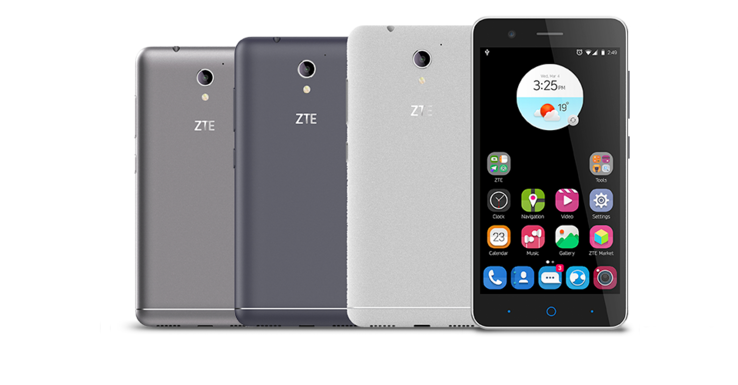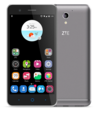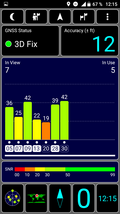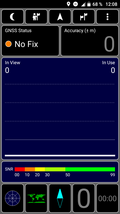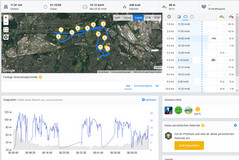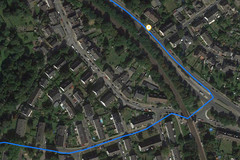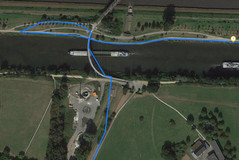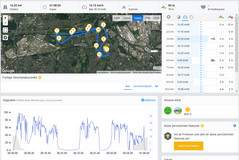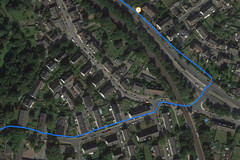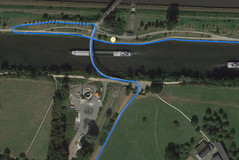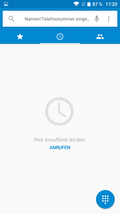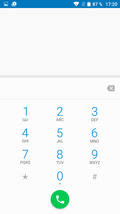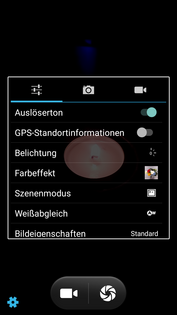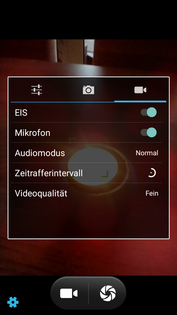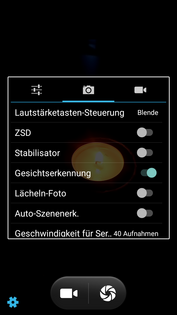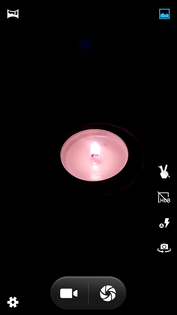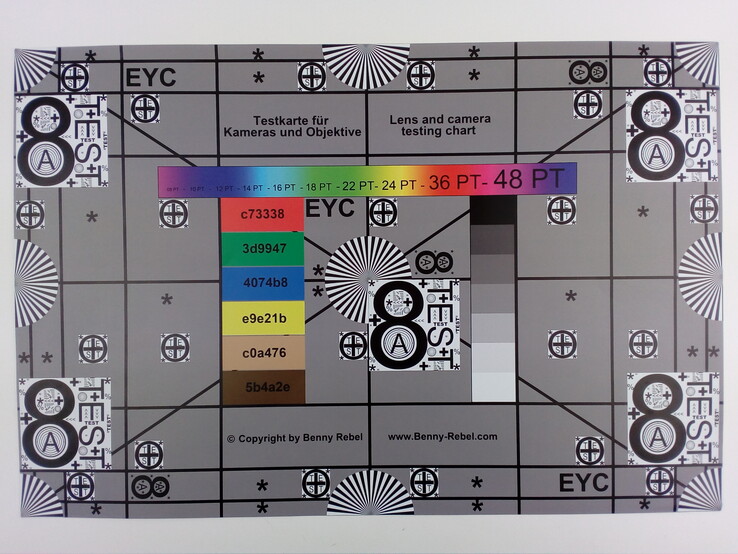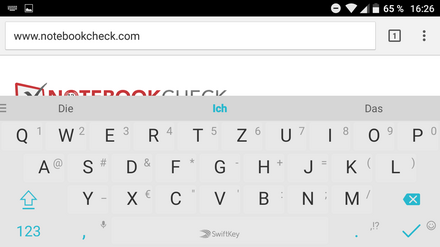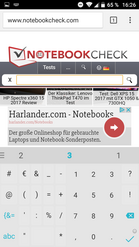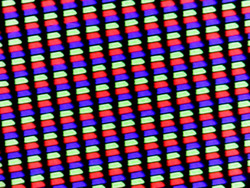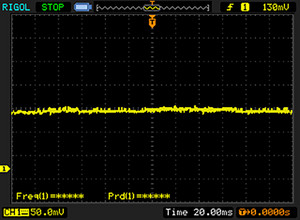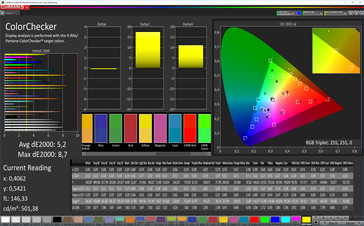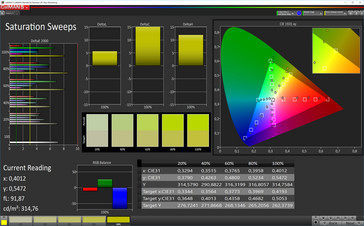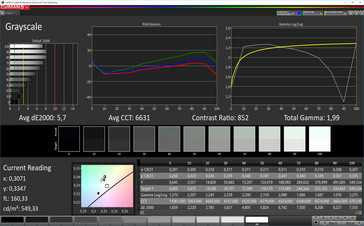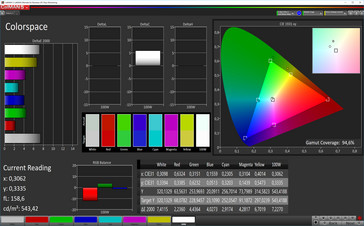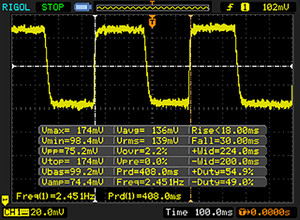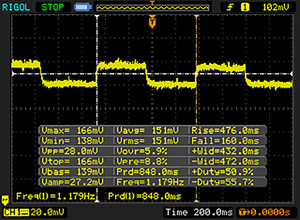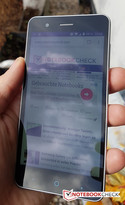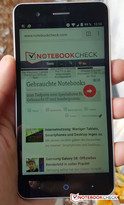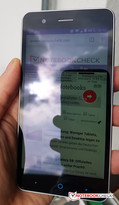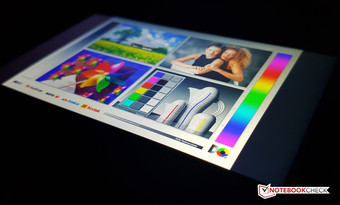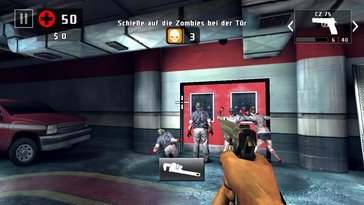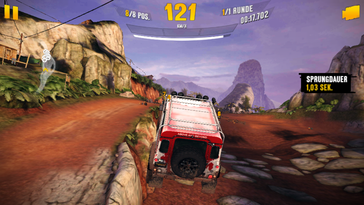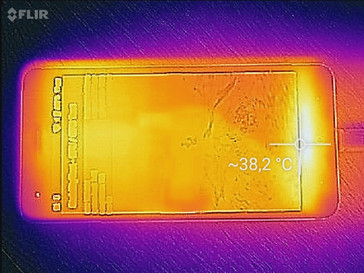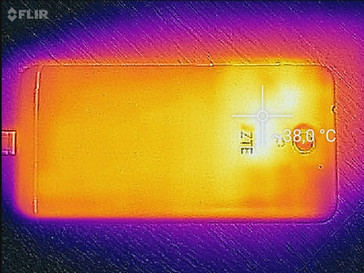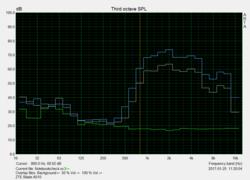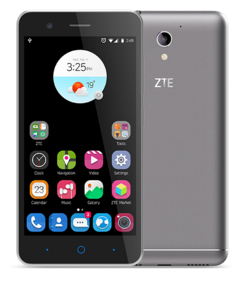ZTE Blade A510 Smartphone Review
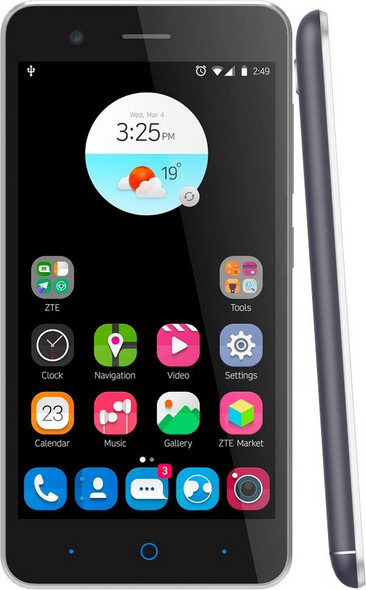
For the original German review, see here.
The smartphone label ZTE aims to score with potential buyers, especially in one aspect of its affordable Blade A510 model: the price. The entry-level smartphone has a current street price of approximately 100 Euros (~$108), and was even available for 80 Euros (~$86) during test time.
The installed hardware components correspond to the price category and only minor differences are found compared with the competition. The Blade A510 has a 5-inch IPS HD panel, a 2200-mAh battery that cannot be replaced despite the removable back cover and a quad-core processor by MediaTek. ZTE relies on only 8 GB of ROM for the internal storage and 1 GB of working memory, which is now rather undersized in this price range (RRP: 130 Euros/~$140). The rear-facing camera has a resolution of 13 MP, while the front-facing camera has 5 MP. According to the manufacturer, they are capable of shooting brilliant photos.
The rivals in this price sector that we will also use as comparison devices are Blackview's A8 Max, Archos' 50 Platinum 4G, TP-Link's Neffos C5, Huawei's Y5 II, and Ulefone's Metal. However, the Blade V7 Lite sister model is a possible alternative since it costs only 30 to 40 Euros (~$32 to ~$43) more than the Blade A510 and their technical specifications are similar
Case
In Germany, ZTE's smartphone is available in white, light-silver and dark-gray. The casing of the Blade A510 is plastic and glass on the front, and is well manufactured. The entry-level's display bezel is quite large, which is also reflected in the relatively poor screen-surface ratio of 66%. The power button and volume control have good pressure points.
The back cover that can be dented slightly can be removed in order to expand the storage with a microSD card, or accessing the two SIM card slots. The 2200 mAh battery cannot be removed. High pressure on the casing's back produces a slightly visible wave formation on the screen. Nevertheless, the casing's stability does not give much cause for complaint.
Connectivity
The Blade A510's internal eMMC storage has a capacity of just 8 GB, and the user has just under 4 GB for personal use in the state of delivery. At least, the dual SIM smartphone's storage can be expanded by up to 32 GB via a microSD. It can also be formatted as internal storage.
The micro USB 2.0 port on the lower edge can only be used for recharging the smartphone. It does not support OTG functionality (on-the-go). In addition to Wi-Fi Direct, a status LED for missed notifications is also included.
Software
As with the Blade V7 lineup, ZTE relies on Google's Android operating system version 6.0 Marshmallow and covers it with a proprietary user interface, MiFavor 3.5. However, it is very similar to the standard Android in the setting menus and notification bar. An app drawer is not installed.
An update to the new Android 7.0 Nougat has not been announced yet and it is questionable whether the smartphone will receive an update to the manufacturer's MiFavor 4.0 user interface. At the time of testing, the system had the latest software version with the security patch level from July 2016.
Communication and GPS
The integrated Wi-Fi module supports the IEEE 802.11 b/g/n standard and thus transmits only in the 2.4 GHz frequency range. The transmission speed of 50 Mbit/s between the smartphone and our Linksys EA 8500 reference router is on par with other entry-level devices. The attenuation of almost -34 dBm in the direct vicinity of the router (Telekom Speedport, W921V) is comparatively low.
The dual SIM smartphone accesses the mobile Internet with a nano SIM and a micro SIM card in LTE speed. Unlike many other comparable devices with a hybrid slot, the second card is not restricted to the GSM network. Quad band GSM, dual band UMTS, and LTE in the 1, 3, 7, 8, and 20 frequency bands are supported.
The Blade A510 is equipped with Bluetooth version 4.1 for wireless communication between end devices. Unfortunately, an NFC chip is not installed.
| Networking | |
| iperf3 transmit AX12 | |
| Google Pixel XL 2016 | |
| ZTE Blade A510 | |
| Blackview A8 Max | |
| iperf3 receive AX12 | |
| Google Pixel XL 2016 | |
| ZTE Blade A510 | |
| Blackview A8 Max | |
| iperf Client (transmit) TCP 1 m | |
| Ulefone Metal | |
| Huawei Y5 II | |
| TP-Link Neffos C5 | |
| Archos 50 Platinum 4G | |
| iperf Server (receive) TCP 1 m | |
| Ulefone Metal | |
| Archos 50 Platinum 4G | |
| Huawei Y5 II | |
| TP-Link Neffos C5 | |
ZTE's smartphone is tracked via a GPS module. Finding our position outdoors was performed quickly and with an accuracy of approximately 3 meters (~10 ft). The signal was too weak to find our position indoors. We also took the entry-level smartphone on a roughly 12-kilometer (~7.5 mi) test drive to check the GPS accuracy and compared its results with that of Garmin's Edge 500 professional navigation system. The difference between the two devices is 410 meters (~448 yd). Overall, the smartphone's performance is satisfactory for the price range, but it is not on a good level.
Telephone and Call Quality
We quite liked the call quality of the Blade A510 in the mobile (D) network in the test. We understood our contact clearly and our contact also understood us well. ZTE relies on Google's standard phone app. The user interface design is basic and offers the usual phone features, such as favorites, quick dial, and contacts.
Cameras
The Chinese manufacturer does not reveal much about the camera modules installed in the Blade A510. A 13-MP camera (4160x3120 pixels) with phase detection autofocus and a single-colored LED flash is installed on the rear. Videos can be recorded at a maximum resolution of 1280x720 pixels and a refresh rate of 30 frames per second.
The rear-facing camera's quality is quite impressive for this price category. The photos taken with the Blade A510 in bright light conditions convince with a good, high-contrast color reproduction. Furthermore, focusing on close objects in macro-photography is very good. The dynamic range in the photos and the sharpness achieved with the autofocus is good, even though it decreases visibly toward the edges. However, only a few image details can be recognized in zoomed photos. The autofocus finds its limits in low-light conditions, and the pictures display visible blurriness and image noise. Overall, we think the shutter speed as rather slow, which reduces the overall impression slightly.
The lens on the handset's front has a resolution of only 5 MP (2592x1944 pixels) and a fixed focus. The 5-MP camera's quality is sufficient for selfies, but photos often present weaknesses in sharpness due to insufficient focusing.
Accessories and Warranty
In addition to ZTE's smartphone, the box contained a stereo headset, a modular power supply, a USB cable, and a quick start.
According to the included warranty card, the manufacturer offers a 24-month warranty from the date of purchase. Please see our Guarantees, Return Policies and Warranties FAQ for country-specific information.
Input Devices and Handling
The Blade A510 is controlled via three capacitive buttons that are located below the screen. Unlike the Blade V7 Lite, they are not backlit. Apart from the home button, the capacitive keys can be mapped with Android-typical commands (back, multitasking). The multi-touchscreen responds accurately to inputs made with up to 5 fingers, but sometimes with noticeable delay.
The scratch-resistant glass surface offers pleasant typing and gliding qualities. The virtual on screen keyboard by SwiftKey is preloaded as an input option.
Display
The IPS LCD screen has a diagonal of 12.7 centimeters (5 inches). This, together with a resolution of 1280x720 pixels results in a pixel density of 294 PPI. Pixels are barely visible during normal use and viewing distances. Subjectively, texts with small fonts look slightly blurred. However, the competitors in this price range do not offer a higher pixel count per inch.
The maximum brightness of 537 cd/m² that we measured from the Blade A510 is very good for an entry-level smartphone, and its illumination of 94% is very homogeneous. The screen achieves a brightness of 529 cd/m² when the ambient light sensor for controlling screen brightness is enabled. The realistic APL50 test (average picture level) with evenly distributed bright and dark areas results in a virtually equal maximum brightness of 530 cd/m² in the screen's center at a black level of 0.64 cd/m².
| |||||||||||||||||||||||||
Brightness Distribution: 94 %
Center on Battery: 528 cd/m²
Contrast: 852:1 (Black: 0.62 cd/m²)
ΔE ColorChecker Calman: 5.2 | ∀{0.5-29.43 Ø4.79}
ΔE Greyscale Calman: 5.7 | ∀{0.09-98 Ø5}
Gamma: 1.99
CCT: 6631 K
| ZTE Blade A510 IPS, 1280x720, 5" | ZTE Blade V7 Lite IPS, 1280x720, 5" | TP-Link Neffos C5 IPS, 1280x720, 5" | Ulefone Metal IPS, 1280x720, 5" | Archos 50 Platinum 4G IPS, 1280x720, 5" | Blackview A8 Max IPS, 1280x720, 5.5" | Huawei Y5 II IPS, 1280x720, 5" | Google Pixel XL 2016 AMOLED, 2560x1440, 5.5" | |
|---|---|---|---|---|---|---|---|---|
| Screen | -11% | -14% | -29% | -19% | -29% | -35% | -1% | |
| Brightness middle (cd/m²) | 528 | 312 -41% | 508 -4% | 312 -41% | 344 -35% | 435 -18% | 465 -12% | 402 -24% |
| Brightness (cd/m²) | 524 | 302 -42% | 491 -6% | 315 -40% | 349 -33% | 407 -22% | 443 -15% | 408 -22% |
| Brightness Distribution (%) | 94 | 79 -16% | 89 -5% | 87 -7% | 89 -5% | 86 -9% | 90 -4% | 85 -10% |
| Black Level * (cd/m²) | 0.62 | 0.15 76% | 0.58 6% | 0.56 10% | 0.65 -5% | 1.08 -74% | 0.84 -35% | |
| Contrast (:1) | 852 | 2080 144% | 876 3% | 557 -35% | 529 -38% | 403 -53% | 554 -35% | |
| Colorchecker dE 2000 * | 5.2 | 8.2 -58% | 7 -35% | 6.8 -31% | 5.8 -12% | 5.7 -10% | 7.8 -50% | 4 23% |
| Colorchecker dE 2000 max. * | 8.7 | 16.5 -90% | 14.1 -62% | 14 -61% | 10.7 -23% | 12.3 -41% | 15.7 -80% | 10.1 -16% |
| Greyscale dE 2000 * | 5.7 | 9.2 -61% | 6.1 -7% | 7.1 -25% | 5.7 -0% | 5.9 -4% | 8.4 -47% | 3.2 44% |
| Gamma | 1.99 111% | 2.29 96% | 2.15 102% | 2.77 79% | 2.1 105% | 2.18 101% | 2.07 106% | 2.19 100% |
| CCT | 6631 98% | 9017 72% | 8068 81% | 7402 88% | 7792 83% | 8164 80% | 8438 77% | 7037 92% |
* ... smaller is better
Screen Flickering / PWM (Pulse-Width Modulation)
| Screen flickering / PWM not detected | |||
In comparison: 53 % of all tested devices do not use PWM to dim the display. If PWM was detected, an average of 8152 (minimum: 5 - maximum: 343500) Hz was measured. | |||
The colors on the IPS panel look vivid and intense in everyday use, and the measured contrast of 852:1 (black level: 0.62 cd/m²) is also high enough and appealing for an entry-level handset. Furthermore, the screen in our review sample achieved an almost complete coverage in the sRGB color space measurement. The average DeltaE deviation in colors and grayscale levels of 5.2 and 5.7 compared with the sRGB color space are also on a good level for the price category, even though the ideal value is <3. The measured color temperature of 6631 K is perfect compared with the ideal rate of 6500 K.
Display Response Times
| ↔ Response Time Black to White | ||
|---|---|---|
| 48 ms ... rise ↗ and fall ↘ combined | ↗ 18 ms rise | |
| ↘ 30 ms fall | ||
| The screen shows slow response rates in our tests and will be unsatisfactory for gamers. In comparison, all tested devices range from 0.1 (minimum) to 240 (maximum) ms. » 99 % of all devices are better. This means that the measured response time is worse than the average of all tested devices (20.3 ms). | ||
| ↔ Response Time 50% Grey to 80% Grey | ||
| 636 ms ... rise ↗ and fall ↘ combined | ↗ 476 ms rise | |
| ↘ 160 ms fall | ||
| The screen shows slow response rates in our tests and will be unsatisfactory for gamers. In comparison, all tested devices range from 0.165 (minimum) to 636 (maximum) ms. » 100 % of all devices are better. This means that the measured response time is worse than the average of all tested devices (31.7 ms). | ||
Thanks to the underlying IPS technology, the liquid crystal display in the Blade A510 presents very stable viewing angles. Colors do not distort even in flat viewing angles, but the screen darkens slightly. The entry-level smartphone also looks good in bright light conditions thanks to the LED backlight's high maximum brightness, and always remains sufficiently legible.
Performance
MediaTek's processor installed into the Blade A510 is an ARM based mid-range SoC from 2014, which is now only found in low-cost entry-level smartphones. The manufacturer's SoC (system-on-a-chip) has four Cortex A53 cores with a 64-bit architecture and clock at a maximum of 1.5 GHz. However, ZTE has reduced the MT6735(p) clock speed to 1 GHz in the Blade A510. The quad-core SoC's performance is able to ensure a mostly smooth system performance in everyday use, same as in Coolpad's Porto S. However, the Blade A510's work speed convinces us only conditionally - breaks, stutters and long delays occurred even during low load. The system often needed a few seconds during multitasking, and browsing via the preloaded Chrome browser needed longer to open websites. The synthetic benchmarks confirm the subjective impressions. The performance of ZTE's handset is the lowest in the comparison and not really on par with the MT6735 competitors - only Archos 50 Platinum 4G presents similar scores.
The installed 8 GB of flash memory also reveals very weak access rates, and accessing the micro SD card (reference memory card: Toshiba Exceria Pro M401, max. read: 95 MB/s; write: 80 MB/s) is also relatively slow. The Androbench 5 benchmark test reveals the poorest performance in the comparison field, particularly when reading large and small data blocks.
| AndroBench 3-5 | |
| Sequential Write 256KB SDCard (sort by value) | |
| ZTE Blade A510 | |
| ZTE Blade V7 Lite | |
| TP-Link Neffos C5 | |
| Ulefone Metal | |
| Archos 50 Platinum 4G | |
| Blackview A8 Max | |
| Huawei Y5 II | |
| Sequential Read 256KB SDCard (sort by value) | |
| ZTE Blade A510 | |
| ZTE Blade V7 Lite | |
| TP-Link Neffos C5 | |
| Ulefone Metal | |
| Archos 50 Platinum 4G | |
| Blackview A8 Max | |
| Huawei Y5 II | |
| Random Write 4KB (sort by value) | |
| ZTE Blade A510 | |
| ZTE Blade V7 Lite | |
| TP-Link Neffos C5 | |
| Ulefone Metal | |
| Archos 50 Platinum 4G | |
| Blackview A8 Max | |
| Huawei Y5 II | |
| Google Pixel XL 2016 | |
| Random Read 4KB (sort by value) | |
| ZTE Blade A510 | |
| ZTE Blade V7 Lite | |
| TP-Link Neffos C5 | |
| Ulefone Metal | |
| Archos 50 Platinum 4G | |
| Blackview A8 Max | |
| Huawei Y5 II | |
| Google Pixel XL 2016 | |
| Sequential Write 256KB (sort by value) | |
| ZTE Blade A510 | |
| ZTE Blade V7 Lite | |
| TP-Link Neffos C5 | |
| Ulefone Metal | |
| Archos 50 Platinum 4G | |
| Blackview A8 Max | |
| Huawei Y5 II | |
| Google Pixel XL 2016 | |
| Sequential Read 256KB (sort by value) | |
| ZTE Blade A510 | |
| ZTE Blade V7 Lite | |
| TP-Link Neffos C5 | |
| Ulefone Metal | |
| Archos 50 Platinum 4G | |
| Blackview A8 Max | |
| Huawei Y5 II | |
| Google Pixel XL 2016 | |
| AnTuTu v6 - Total Score (sort by value) | |
| ZTE Blade A510 | |
| ZTE Blade V7 Lite | |
| TP-Link Neffos C5 | |
| Ulefone Metal | |
| Archos 50 Platinum 4G | |
| Blackview A8 Max | |
| Huawei Y5 II | |
| Google Pixel XL 2016 | |
| Geekbench 4.0 | |
| 64 Bit Single-Core Score (sort by value) | |
| ZTE Blade A510 | |
| Ulefone Metal | |
| Archos 50 Platinum 4G | |
| Blackview A8 Max | |
| Huawei Y5 II | |
| Google Pixel XL 2016 | |
| 64 Bit Multi-Core Score (sort by value) | |
| ZTE Blade A510 | |
| Ulefone Metal | |
| Archos 50 Platinum 4G | |
| Blackview A8 Max | |
| Huawei Y5 II | |
| Google Pixel XL 2016 | |
| GFXBench (DX / GLBenchmark) 2.7 | |
| T-Rex Onscreen (sort by value) | |
| ZTE Blade A510 | |
| ZTE Blade V7 Lite | |
| TP-Link Neffos C5 | |
| Ulefone Metal | |
| Archos 50 Platinum 4G | |
| Blackview A8 Max | |
| Huawei Y5 II | |
| Google Pixel XL 2016 | |
| 1920x1080 T-Rex Offscreen (sort by value) | |
| ZTE Blade A510 | |
| ZTE Blade V7 Lite | |
| TP-Link Neffos C5 | |
| Ulefone Metal | |
| Archos 50 Platinum 4G | |
| Blackview A8 Max | |
| Huawei Y5 II | |
| Google Pixel XL 2016 | |
| GFXBench 3.0 | |
| on screen Manhattan Onscreen OGL (sort by value) | |
| ZTE Blade A510 | |
| ZTE Blade V7 Lite | |
| TP-Link Neffos C5 | |
| Ulefone Metal | |
| Archos 50 Platinum 4G | |
| Blackview A8 Max | |
| Huawei Y5 II | |
| Google Pixel XL 2016 | |
| 1920x1080 1080p Manhattan Offscreen (sort by value) | |
| ZTE Blade V7 Lite | |
| TP-Link Neffos C5 | |
| Ulefone Metal | |
| Archos 50 Platinum 4G | |
| Blackview A8 Max | |
| Huawei Y5 II | |
| Google Pixel XL 2016 | |
| GFXBench 3.1 | |
| on screen Manhattan ES 3.1 Onscreen (sort by value) | |
| ZTE Blade A510 | |
| ZTE Blade V7 Lite | |
| Ulefone Metal | |
| Archos 50 Platinum 4G | |
| Blackview A8 Max | |
| Huawei Y5 II | |
| Google Pixel XL 2016 | |
| 1920x1080 Manhattan ES 3.1 Offscreen (sort by value) | |
| ZTE Blade A510 | |
| ZTE Blade V7 Lite | |
| Ulefone Metal | |
| Archos 50 Platinum 4G | |
| Blackview A8 Max | |
| Huawei Y5 II | |
| Google Pixel XL 2016 | |
| PCMark for Android - Work performance score (sort by value) | |
| ZTE Blade A510 | |
| TP-Link Neffos C5 | |
| Ulefone Metal | |
| Archos 50 Platinum 4G | |
| Blackview A8 Max | |
| Huawei Y5 II | |
| Google Pixel XL 2016 | |
| BaseMark OS II | |
| Overall (sort by value) | |
| ZTE Blade A510 | |
| ZTE Blade V7 Lite | |
| TP-Link Neffos C5 | |
| Ulefone Metal | |
| Archos 50 Platinum 4G | |
| Blackview A8 Max | |
| Huawei Y5 II | |
| Google Pixel XL 2016 | |
| System (sort by value) | |
| ZTE Blade A510 | |
| ZTE Blade V7 Lite | |
| TP-Link Neffos C5 | |
| Ulefone Metal | |
| Archos 50 Platinum 4G | |
| Blackview A8 Max | |
| Huawei Y5 II | |
| Google Pixel XL 2016 | |
| Memory (sort by value) | |
| ZTE Blade A510 | |
| ZTE Blade V7 Lite | |
| TP-Link Neffos C5 | |
| Ulefone Metal | |
| Archos 50 Platinum 4G | |
| Blackview A8 Max | |
| Huawei Y5 II | |
| Google Pixel XL 2016 | |
| Graphics (sort by value) | |
| ZTE Blade A510 | |
| ZTE Blade V7 Lite | |
| TP-Link Neffos C5 | |
| Ulefone Metal | |
| Archos 50 Platinum 4G | |
| Blackview A8 Max | |
| Huawei Y5 II | |
| Google Pixel XL 2016 | |
| Web (sort by value) | |
| ZTE Blade A510 | |
| ZTE Blade V7 Lite | |
| TP-Link Neffos C5 | |
| Ulefone Metal | |
| Archos 50 Platinum 4G | |
| Blackview A8 Max | |
| Huawei Y5 II | |
| Google Pixel XL 2016 | |
| Mozilla Kraken 1.1 - Total (sort by value) | |
| ZTE Blade A510 | |
| ZTE Blade V7 Lite | |
| TP-Link Neffos C5 | |
| Ulefone Metal | |
| Archos 50 Platinum 4G | |
| Blackview A8 Max | |
| Huawei Y5 II | |
| Google Pixel XL 2016 | |
| Octane V2 - Total Score (sort by value) | |
| ZTE Blade A510 | |
| ZTE Blade V7 Lite | |
| TP-Link Neffos C5 | |
| Ulefone Metal | |
| Archos 50 Platinum 4G | |
| Blackview A8 Max | |
| Huawei Y5 II | |
| Google Pixel XL 2016 | |
| JetStream 1.1 - Total Score (sort by value) | |
| ZTE Blade A510 | |
| ZTE Blade V7 Lite | |
| TP-Link Neffos C5 | |
| Ulefone Metal | |
| Archos 50 Platinum 4G | |
| Blackview A8 Max | |
| Huawei Y5 II | |
| Google Pixel XL 2016 | |
* ... smaller is better
Games
The Mali T720 graphics unit integrated into MediaTek's MT6735 has only one cluster that clocks at up to 600 MHz. Thus, it was not surprising that the Mali GPU only managed up-to-date games from the Android Play Store with stutters and lags while gaming.
Emissions
Temperature
The temperature development of the entry-level smartphone is no problem in everyday use. The Blade A510 is pleasantly cool, even during heavy duty calculations. ZTE's handset heats up to a maximum of 36.1 °C (~97 °F) on its upper side during system load (CPU and GPU) in the one hour stress test via the Stability test application. Large areas on the rear remain below 34 °C (~93 °F).
(+) The maximum temperature on the upper side is 37.4 °C / 99 F, compared to the average of 35.2 °C / 95 F, ranging from 21.9 to 247 °C for the class Smartphone.
(+) The bottom heats up to a maximum of 36.1 °C / 97 F, compared to the average of 34 °C / 93 F
(±) In idle usage, the average temperature for the upper side is 32.5 °C / 91 F, compared to the device average of 32.9 °C / 91 F.
Speaker
The mono speaker on the handset's rear is loud enough with a volume of approximately 80 dB(A). The direct competition achieves very similar rates of over 80 dB(A) in our tests. However, the sound quality is only midfield for this price range.
The sound impression is not very linear in the medium and high-frequency range of 500 Hz to 7 kHz - as expected, basses are inaudible, but even ultra-high tones from 8 kHz are clearly understated.
ZTE Blade A510 audio analysis
(±) | speaker loudness is average but good (80.3 dB)
Bass 100 - 315 Hz
(-) | nearly no bass - on average 32.1% lower than median
(±) | linearity of bass is average (7.2% delta to prev. frequency)
Mids 400 - 2000 Hz
(-) | very high mids - on average 15.8% higher than median
(-) | mids are not linear (16.8% delta to prev. frequency)
Highs 2 - 16 kHz
(±) | higher highs - on average 7.7% higher than median
(±) | linearity of highs is average (10.5% delta to prev. frequency)
Overall 100 - 16.000 Hz
(-) | overall sound is not linear (45.1% difference to median)
Compared to same class
» 87% of all tested devices in this class were better, 0% similar, 13% worse
» The best had a delta of 11%, average was 35%, worst was 134%
Compared to all devices tested
» 96% of all tested devices were better, 0% similar, 4% worse
» The best had a delta of 4%, average was 24%, worst was 134%
Archos 50 Platinum 4G audio analysis
(±) | speaker loudness is average but good (81.2 dB)
Bass 100 - 315 Hz
(-) | nearly no bass - on average 39% lower than median
(±) | linearity of bass is average (8.5% delta to prev. frequency)
Mids 400 - 2000 Hz
(±) | reduced mids - on average 8.1% lower than median
(±) | linearity of mids is average (9.6% delta to prev. frequency)
Highs 2 - 16 kHz
(+) | balanced highs - only 2.3% away from median
(+) | highs are linear (3.4% delta to prev. frequency)
Overall 100 - 16.000 Hz
(-) | overall sound is not linear (30.6% difference to median)
Compared to same class
» 79% of all tested devices in this class were better, 4% similar, 18% worse
» The best had a delta of 11%, average was 35%, worst was 134%
Compared to all devices tested
» 89% of all tested devices were better, 3% similar, 9% worse
» The best had a delta of 4%, average was 24%, worst was 134%
ZTE Blade V7 Lite audio analysis
(+) | speakers can play relatively loud (82.6 dB)
Bass 100 - 315 Hz
(-) | nearly no bass - on average 35.5% lower than median
(±) | linearity of bass is average (7% delta to prev. frequency)
Mids 400 - 2000 Hz
(±) | reduced mids - on average 5.1% lower than median
(±) | linearity of mids is average (8% delta to prev. frequency)
Highs 2 - 16 kHz
(+) | balanced highs - only 2.2% away from median
(+) | highs are linear (2.2% delta to prev. frequency)
Overall 100 - 16.000 Hz
(±) | linearity of overall sound is average (23.8% difference to median)
Compared to same class
» 53% of all tested devices in this class were better, 9% similar, 38% worse
» The best had a delta of 11%, average was 35%, worst was 134%
Compared to all devices tested
» 70% of all tested devices were better, 6% similar, 23% worse
» The best had a delta of 4%, average was 24%, worst was 134%
Frequency diagram in comparison (checkboxes above can be turned on/off!)
Energy Management
Power Consumption
The power consumption of ZTE's Blade A510 is inconspicuous and on par with that of the comparison devices. The load power consumption could be slightly lower compared with the power consumption of the Blade V7 Lite sister model.
| Off / Standby | |
| Idle | |
| Load |
|
Key:
min: | |
| ZTE Blade A510 2200 mAh | ZTE Blade V7 Lite 2500 mAh | TP-Link Neffos C5 2200 mAh | Ulefone Metal 3050 mAh | Archos 50 Platinum 4G 2200 mAh | Blackview A8 Max 3000 mAh | Huawei Y5 II 2200 mAh | |
|---|---|---|---|---|---|---|---|
| Power Consumption | 20% | -18% | -56% | 6% | -11% | 13% | |
| Idle Minimum * (Watt) | 0.61 | 0.63 -3% | 0.72 -18% | 1.41 -131% | 0.59 3% | 0.74 -21% | 0.54 11% |
| Idle Average * (Watt) | 1.75 | 1.37 22% | 1.87 -7% | 2.46 -41% | 1.68 4% | 1.97 -13% | 1.58 10% |
| Idle Maximum * (Watt) | 1.83 | 1.71 7% | 2 -9% | 2.83 -55% | 1.79 2% | 2.09 -14% | 1.7 7% |
| Load Average * (Watt) | 4.49 | 2.82 37% | 5.99 -33% | 5.15 -15% | 4.22 6% | 4.89 -9% | 2.98 34% |
| Load Maximum * (Watt) | 5.14 | 3.36 35% | 6.45 -25% | 7.05 -37% | 4.26 17% | 5.09 1% | 4.98 3% |
* ... smaller is better
Battery Runtime
The battery life of the Blade A510 and the 2200 mAh battery is in the midfield of the comparison devices with 6 hours and 56 minutes in our Wi-Fi test with a brightness set to 150 cd/m².
It takes about 2.5 hours to fully recharge a depleted battery with the included 5-watt power supply (1 A, 5 V). Roughly half the capacity is reached in one hour.
| ZTE Blade A510 2200 mAh | ZTE Blade V7 Lite 2500 mAh | TP-Link Neffos C5 2200 mAh | Ulefone Metal 3050 mAh | Archos 50 Platinum 4G 2200 mAh | Blackview A8 Max 3000 mAh | Huawei Y5 II 2200 mAh | |
|---|---|---|---|---|---|---|---|
| Battery runtime | |||||||
| WiFi v1.3 (h) | 6.9 | 8.6 25% | 7.6 10% | 6.7 -3% | 6.4 -7% | 8.4 22% | 8.4 22% |
Pros
Cons
Verdict
The Blade A510 by the Chinese manufacturer ZTE definitely has what it takes to be a good to very good entry-level smartphone. The IPS panel is very bright, homogeneous, and high-contrast for this price category. The color reproduction was also convincing in the test. Furthermore, ZTE's smartphone presents a superb call quality and good quality camera modules for a low-cost device. The battery life is also satisfactory.
The performance issues could vilify the otherwise decent entry-level Blade A510 smartphone to a potential shelf warmer.
The biggest shortcoming of the Blade A510 and also the reason why we can only give it a conditional purchase recommendation is its really poor system performance. The low-performance MediaTek SoC with 1 GB of RAM together with the slow eMMC storage cause system dropouts and prolonged loading times.
ZTE Blade A510
- 03/06/2017 v6 (old)
Marcus Herbrich




